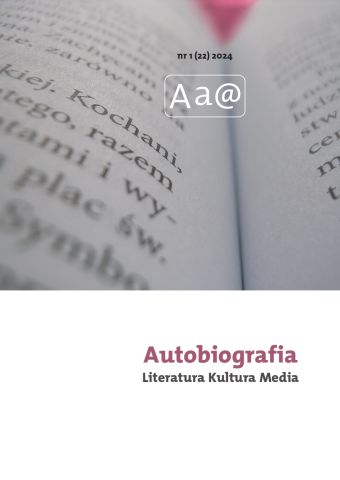






| Authors: |
Katarzyna
Macedulska

Uniwersytet im. Adama Mickiewicza w Poznaniu |
| Keywords: | memoir Rwanda genocide trauma testimony resilience Agaciro |
| Whole issue publication date: | 2024 |
| Page range: | 13 (31-43) |
| 1. | Becker, Scott H., Roger M. Knudson. “Visions of the Dead: Imagination and Mourning.” Death Studies, 27:8 (2011): 691-716. https://doi.org/10.1080/713842339. |
| 2. | Burnet, Jennie E. Genocide Lives in Us. Women, Memory, and Silence in Rwanda. The University of Wisconsin Press, 2012. |
| 3. | Cohn, Dorrit. “Signposts of Fictionality: a Narratological Perspective.” Poetics Today, Vol. 11, No. 4 (1990): 775-804. https://doi.org/10.2307/1773077. |
| 4. | Couser, G. Thomas. Memoir: An Introduction. Oxford University Press, 2012. |
| 5. | Dogon, Mondiant. Those We Throw Away Are Diamonds: A Refugee’s Search for Home. Penguin, 2021. |
| 6. | Eramian, Laura. “Personhood, Violence, and the Moral Work of Memory in Contemporary Rwanda.” International Journal of Conflict and Violence, Vol. 8.1 (2014): 16-29. https://doi.org/10.4119/ijcv-3042. |
| 7. | Gilmore, Leigh. The Limits of Autobiography. Trauma and Testimony. Cornell University Press, 2001. |
| 8. | Jessee, Erin. Negotiating Genocide in Rwanda. The Politics of History. Palgrave, 2017. |
| 9. | Lejeune, Philippe. On Autobiography. University of Minnesota Press, 1989. |
| 10. | Madden, Patrick. “The ‘New Memoir.’” In The Cambridge Companion to Autobiography, edited by Maria DiBattista and Emily O. Wittman. Cambridge University Press, 2014. |
| 11. | Mwambari, David. “Agaciro, Vernacular Memory, and the Politics of Memory in Post-Genocide Rwanda.” African Affairs, 120/481 (2021): 611-628. https://doi.org/10.1093/afraf/adab031. |
| 12. | Otake, Yuko. “Suffering of Silenced People in Northern Rwanda.” Social Science & Medicine 222 (2009): 171-9. https://doi.org/10.1016/j.socscimed.2019.01.005. |
| 13. | Rafter, Nicole. Crime of All Crimes: Towards a Criminology of Genocide. New York University Press, 2016. |
| 14. | Rak, Julie. Boom! Manufacturing Memoir for the Popular Market. Wilfried Laurier University Press, 2013. |
| 15. | Singer Jefferson A., Pavel Blagov, “The Integrative Function of Narrative Processing: Autobiographical Memory, Self-Defining Memories, and the Life Story of Identity.” In The Self and Memory, edited by Denise R. Beike, James M. Lampinen, Douglas A. Behrend. Psychology Press, 2004. |
| 16. | Theisen-Womersley, Gail. Trauma and Resilience Among Displaced Populations, A Sociocultural Exploration. Springer, 2021. |
| 17. | Vivona, Jeanine M. “Nothing Gold Can Stay?” In Grief and Its Transcendence, edited by Adele Tutter and Léon Wurmser. Routledge, 2016. |
| 18. | Whitlock, Gillian. Soft Weapons. Autobiography in Transit. The University of Chicago Press, 2007. |
| 19. | Wortman, Camille B., Laurie A. Pearlman. “Traumatic Bereavement.” In Techniques of Grief Therapy. Assessment and Intervention, edited by Robert Neimeyer. Routledge, 2016. |